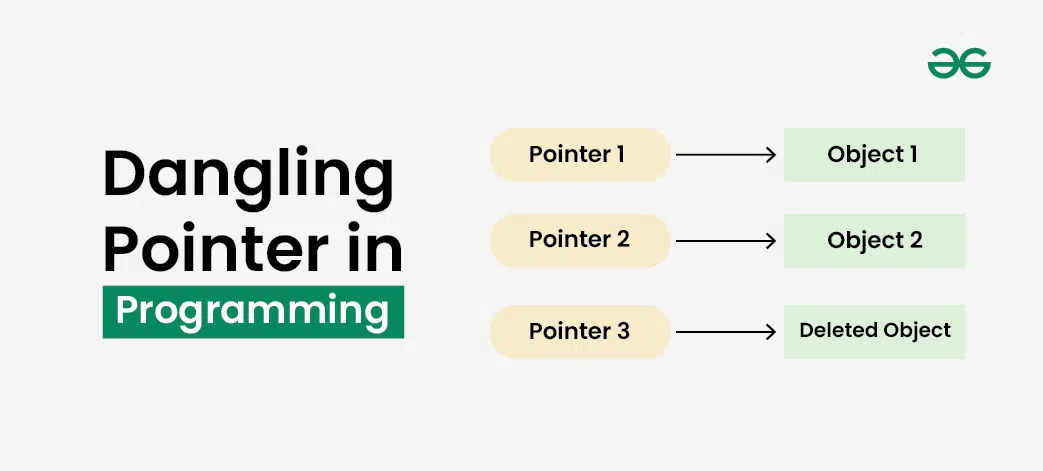
|
|
In programming especially in C and C++, pointers play a very important role in managing memory and improving performance. However incorrect use of pointers can lead to issues. One such issue is creation of dangling pointers. In this article, we will explore what dangling pointers are how they occur and how to prevent them.
What is Dangling Pointer in Programming?Dangling Pointer in programming refers to a pointer that doesn’t point to a valid memory location. This usually happens when an object is deleted or deallocated, without modifying the value of the pointer, so it still points to the memory location of the deallocated memory. Example: Dangling Pointer in C:The below example demonstrates a simple program that creates a dangling pointer in C. Output ptr is now a dangling pointer Dangling Pointer in C++:The below example demonstrates a simple program that creates a dangling pointer in C++. Output ptr is now a dangling pointer Why is it important to handle Dangling Pointers?Handling dangling pointers is important for maintaining the integrity and stability of a program. Dangling pointers occur when a pointer points to a memory location that has been deallocated or freed. If a program attempts to access or modify the memory through a dangling pointer, it can lead to unpredictable behavior, including crashes and data corruption. By handling dangling pointers properly, we can improve the reliability and security of the program and prevent any unpredictable access to any memory location. Preventing Dangling Pointers:To prevent dangling pointers, always set pointers to NULL or nullptr after you have finished using them and have deallocated the memory they point to. This ensures that the pointers do not point to deallocated memory and become dangling pointers. |
Reffered: https://www.geeksforgeeks.org
| Programming |
Type: | Geek |
Category: | Coding |
Sub Category: | Tutorial |
Uploaded by: | Admin |
Views: | 17 |